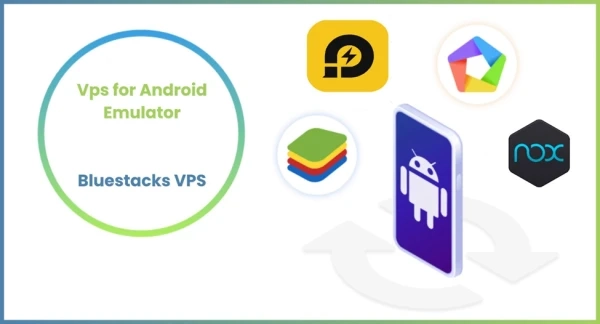Looking to run Android emulators like BlueStacks, Nox, or LDPlayer on a VPS? Discover how a Windows VPS optimized for Android emulators gives you the freedom to run apps 24/7, boost performance, and improve your mobile automation or app testing. Learn step-by-step how to set up and choose the best VPS for Android emulators.
Running Android emulators on your personal computer can quickly become a hassle, especially if you’re multitasking or require 24/7 uptime. Whether you’re testing apps, automating tasks, or managing multiple mobile accounts, a VPS for Android emulator is a powerful solution. By choosing a Windows VPS, you can run emulators like BlueStacks, Nox, or LDPlayer smoothly and without the limitations of local hardware.
Here’s a step-by-step guide to understanding and setting up a VPS Android emulator environment, including why services like Petrosky.io offer an edge.
Step 1: Why Use a VPS for Android Emulator?
A VPS (Virtual Private Server) provides dedicated resources such as RAM, CPU, and disk space. It runs 24/7 on powerful infrastructure — ideal for Android emulators that need continuous uptime and consistent performance.
Key benefits:
- Run multiple emulators simultaneously
- Automate mobile tasks (e.g., social media, gaming)
- Remote access from anywhere
- No resource strain on your personal PC
Step 2: Choose the Right Windows VPS
Not every VPS can handle the resource-heavy nature of Android emulators. Choose a provider that specifically supports virtualization with enough CPU and GPU power.
Look for:
- Windows Server 2016/2019
- At least 4 vCPU and 8 GB RAM
- SSD storage for faster loading
- GPU support for better rendering
- RDP access for easy connection
Petrosky.io offers optimized Windows VPS plans that are pre-configured or ready to support Android emulation workloads.
Step 3: Install Your Preferred Emulator
Once your Windows VPS is ready, connect via Remote Desktop (RDP) and install your Android emulator of choice.
Popular options:
- BlueStacks – Best for casual use and gaming
- NoxPlayer – Lightweight and customizable
- LDPlayer – Great for performance and automation
After installation, sign in with your Google account to access apps from the Play Store and begin using your emulator just like you would on a local PC.
Step 4: Optimize Performance
- Disable Windows animations and background apps
- Allocate more RAM/CPU to the emulator via settings
- Use SSD storage for app installs and cache
- Set up auto-start or task scheduling for automation
Step 5: Use Cases for Android Emulator on VPS
- App Testing & Development – Developers can test apps in a stable and controlled environment
- Social Media Automation – Manage multiple accounts across platforms like Instagram or TikTok
- Play Mobile Games 24/7 – Auto-play games and earn rewards without keeping your PC on
- Marketing & Engagement – Run campaigns, bots, or engagement tools efficiently
Final Thoughts
Using a VPS Android emulator allows you to run powerful emulation without tying up your local system. Whether for testing, gaming, or business automation, a Windows VPS provides the stability and performance you need. Platforms like Petrosky.io offer tailor-made VPS hosting ideal for this exact purpose—making it easier than ever to set up and go.


